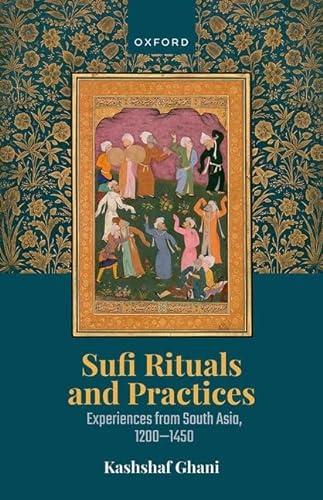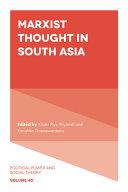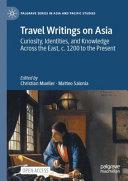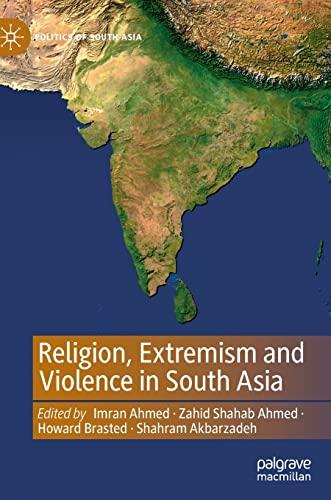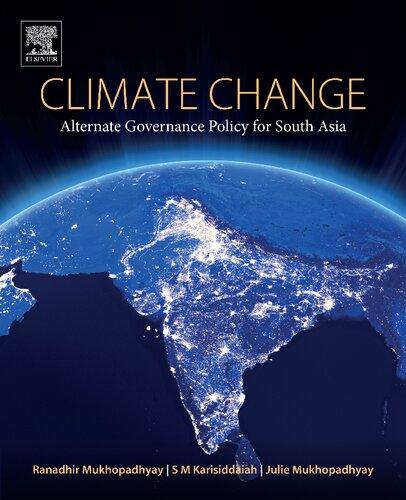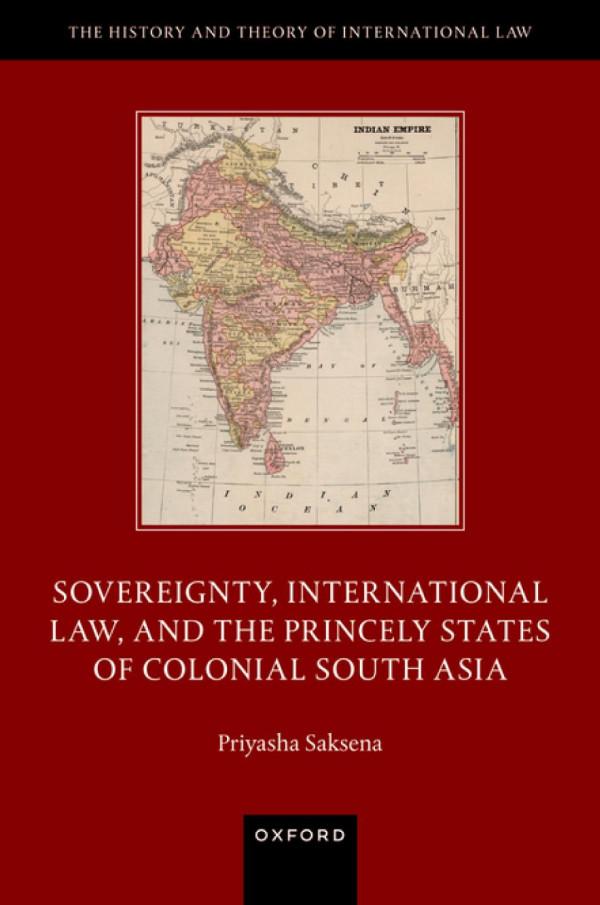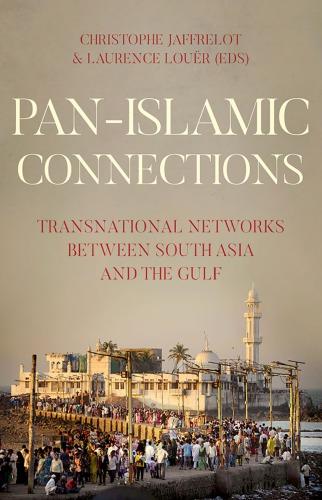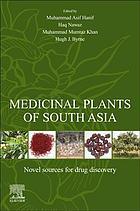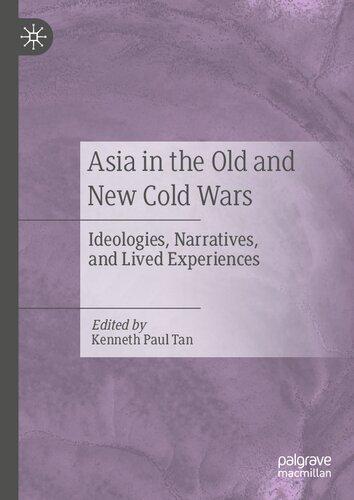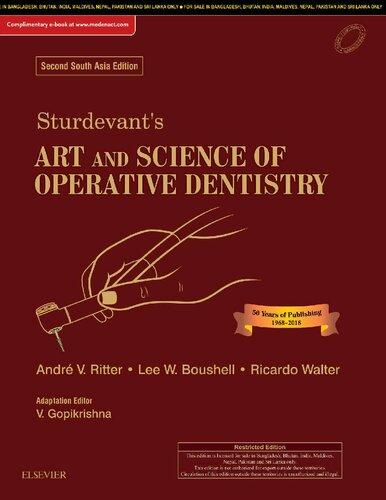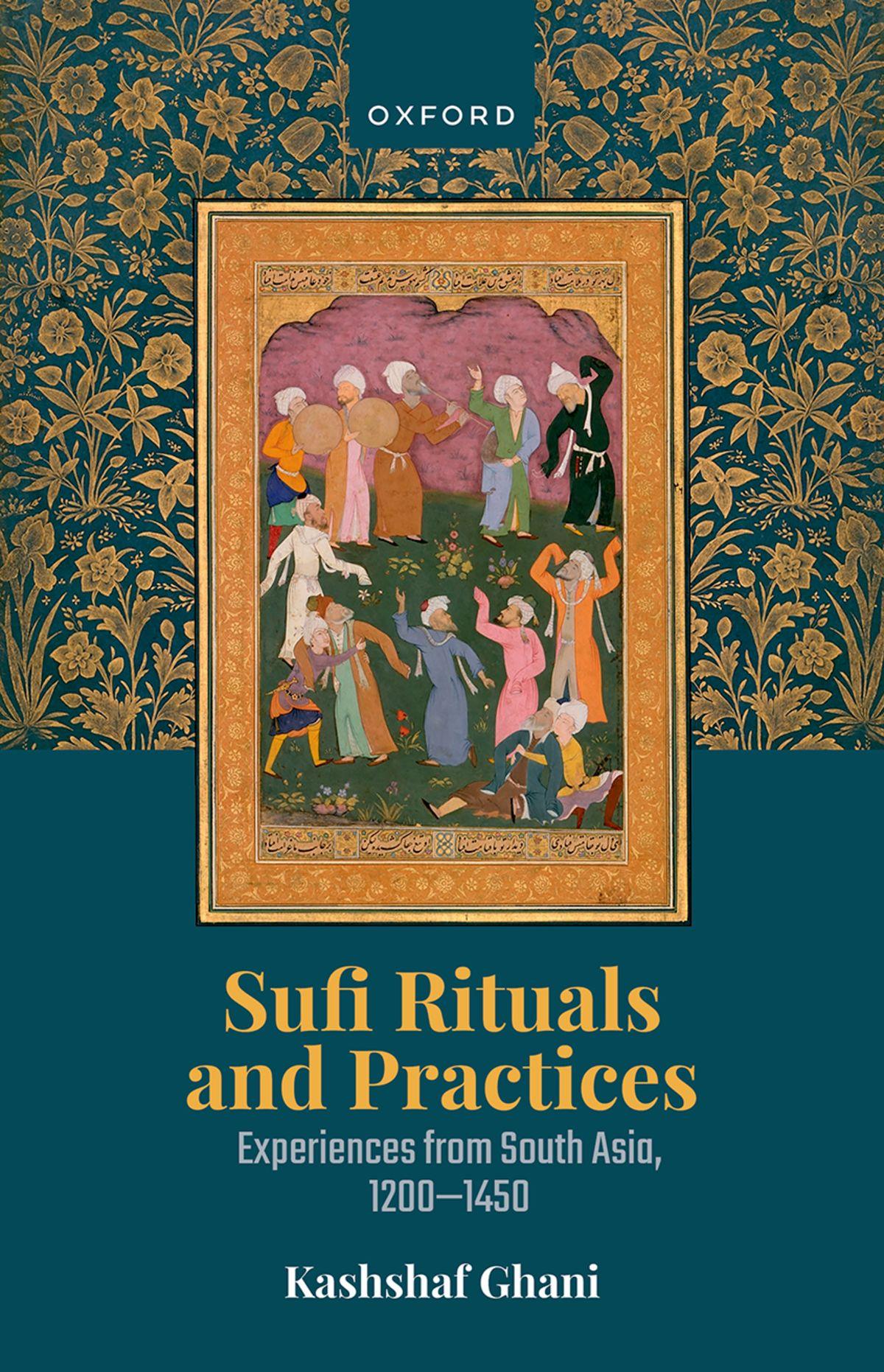Sufi Rituals and Practices
Experiences from SouthAsia, 1200–1450
KASHSHAF GHANI
Great Clarendon Street, Oxford, OX2 6DP, United Kingdom
Oxford University Press is a department of the University of Oxford. It furthers the University’s objective of excellence in research, scholarship, and education by publishing worldwide. Oxford is a registered trade mark of Oxford University Press in the UK and in certain other countries
© Kashshaf Ghani 2024
The moral rights of the author have been asserted
First Edition published in 2024
All rights reserved. No part of this publication may be reproduced, stored in a retrieval system, or transmitted, in any form or by any means, without the prior permission in writing of Oxford University Press, or as expressly permitted by law, by licence or under terms agreed with the appropriate reprographics rights organization. Enquiries concerning reproduction outside the scope of the above should be sent to the Rights Department, Oxford University Press, at the address above
You must not circulate this work in any other form and you must impose this same condition on any acquirer
Published in the United States of America by Oxford University Press 198 Madison Avenue, New York, NY 10016, United States of America
British Library Cataloguing in Publication Data Data available
Library of Congress Control Number: 2023943781
ISBN 978–0–19–288922–5
eISBN 978–0–19–288923–2
DOI: 10.1093/oso/9780192889225.001.0001
Links to third party websites are provided by Oxford in good faith and for information only. Oxford disclaims any responsibility for the materials contained in any third party website referenced in this work.
Dedicatedtomyparents, SHAUKAT ARA GHANI & OSMAN GHANI
Andbegoodandvirtuoustoparents. Saynottothem‘Uff!’ Norchidethem, Butspeakthemanobleword. Say,‘MyLord!Havemercyuponthem, astheyraisedmewhenIwassmall’. (HolyQuran2:83,4:36,6:151,17:23,29:8,31:13-14, 46:15)
TheContentmentofGodliesinthecontentmentofparents, AndtheAngerofGodliesintheangerofparents. Al-KashshafofZamakhshari(d.1143)
Acknowledgements
I remain deeply grateful to all those who, over the years, have extended their generous help and kind support. Rather than a practice, this note sincerely acknowledges their kind-heartedness in the journey towards making this book.
My academic mentor Amit Dey’s relentless support and meticulous supervision made my doctoral research possible. This book draws from that foundational research expanded over the years. His invaluable suggestions, long discussions, and perceptive observations have been of great value at all times. Mere thanks can never do justice to his multifaceted contribution to my life and work. I remain indebted to my teachers—Rajat Kanta Ray, Subhas Ranjan Chakravarty, Bhaskar Chakrabarty, Shireen Maswood, Hari Vasudevan, Madhumita Mazumdar, Suchandra Ghosh, and Bishnupriya Basak. It feels terrible that Hari could not see this finished work. I have been fortunate to receive suggestions and guidance from many professors in the course of my research— Ramakanta Chakrabarty, Akhtar Hussain, Ranjit Sen, Kazi Sufior Rahaman, Rajsekhar Basu, Abdul Gani Imaratwale and Dilip Kumar Mohanta. I have always benefitted from their experience and insight. Samita Sen—under whom I was fortunate to study during my MA, and thereafter work with on the SEPHIS e-Magazine project—has always been there like a pillar of guidance and support. The things that I have learnt from her in all these years—academic and professional—are too valuable to be thanked for. I am grateful to her for being so encouraging, understanding, and affectionate.
Bruce Lawrence and Carl Ernst have been extremely generous to extend their help and guidance whenever I approached them. They introduced me to Scott Kugle, who has always been helpful. No amount of thanks is enough for their kindness. I remain grateful to
Tony Stewart and Arthur Buehler for sharing with me their experiences of researching on Sufism in South Asia. Lloyd Ridgeon has been a great friend, and his suggestions, collaboration, and generous hospitality has only benefitted my research. Years ago, as a doctoral student, I met Suleman Siddiqi in a conference. Ever since, he has always been helpful, kind, and generous, allowing me to learn from his lifelong expertise on Deccan Sufism, and unhesitatingly sharing his valuable insights and experience.
I had the opportunity of accessing many libraries both in Kolkata and beyond—National Library (Kolkata), The Asiatic Society (Kolkata), Calcutta University Central Library (Kolkata), Calcutta University Library (Alipore Campus, Kolkata), Centre for Studies in Social Sciences Calcutta (Kolkata), Ramakrishna Mission Institute of Culture (Golpark, Kolkata), Iran Society (Kolkata), Presidency College (Kolkata), Osmania University (Hyderabad), Nehru Memorial Museum and Library (New Delhi), Jawaharlal Nehru University (New Delhi), the Jamia Millia Islamia (New Delhi), Dhaka University (Dhaka), Asiatic Society (Dhaka), and BULAC (Paris). Carrying out research work in these libraries would not have been possible without the help and cooperation from their staff. Particularly Asim Mukherjee at National Library Kolkata and Shabbir Ahmed at The Asiatic Society. Without the generous hospitality of my elder brother Arshad Amin and his wife Rebecca, who as a faculty facilitated my access to the Dhaka University, the research at Dhaka would have been an uphill task.
My seniors, from college and university, have been an unending source of support, and I sincerely thank Kingshuk Chatterjee, Bodhisattwa Kar, Rohan Deb Roy, Soumen Mukherjee, and Rajarshi Ghose. Right from the days of our doctoral research, Sraman Mukherjee has been a perennial source of encouragement and delight, ever-willing to happily lend his support—in crisis and company.
My friends—Rahul Banerjee, Swastick Basu Mallick, Arka Mukherjee, Samriddhi Sankar Ray, Ritoban Das, Shahabul Islam Gazi, Jayati Mal, Moidul Islam, Lyric Banerjee, Naba Gopal Roy, Shahnaz Begum, Debraj Chakraborty, Nadeem Akhtar, Hardik Brata
Biswas, Madhurima Mukherjee, Santanu Sengupta—have always extended their kind support. It is difficult to appropriately thank Atig Ghosh, who has been a close and dear friend from school days. Thanks to Sreerupa Sengupta for always being there. Pratyay Nath, a fellow medievalist on Mughal South Asia, has seen and engaged with my work closely for many years now. His observations and insights have always been of great help.
Descendants of Shaykh Nizam al-Din Awliya, Kamal Nizami and his family, and especially Kalim Nizami, have been like a family for generations, and deserve special thanks for helping me access sites and resources, but especially for the experience, that has enriched this work manifold.
This book took its final form at Nalanda University, where I joined at its inception and continue to teach. I thank the university for their support at all times, especially former Vice Chancellor Gopa Sabharwal whose unwavering support and encouragement to faculty research kept this book on track amidst many challenges. I am deeply thankful to all my colleagues who, over the years, have been generous with their ideas, observations, encouragement, and moments of laughter. I fondly recall the warm collegiality and enjoyable company of Dean Anjana Sharma, Samuel Wright (Sam), Sraman Mukherjee, Ranu Roychoudhuri, Abhishek Amar, Andrea Acri, Max Deeg, Sean Kerr, Yann Montelle, and Sumanth Paranji. From the earliest days at Nalanda, Aviram Sharma and Somnath-da (Bandyopadhyay) have been my lifeline, not to forget Sangeeta boudi’s wonderful and untiring hospitality. They have been warmhearted colleagues, adventurous companions, careful listeners, engaging discussants, yet perceptive critics—allowing me to benefit from their perspectives as thoughtful and encouraging nonspecialists.
Over the years my students at Nalanda in the Sufism course have been enthusiastic participants, and a great source of questions, critical observations, and constructive discussion, many of which flowed into this work—Aditya, Anmol, Theresa, Gilani, Nupur, Oshin, Rohith, Anantha, Rajnish, Ripunjay, Sachindra, Shubham Das, Shubham Arora, Andrei, Shalini, and Shiva Madhuri. I am thankful to
all of them, and others like Umang, Deepa, Annalisa, Shaashi, and Akiro for freely sharing their thoughts, in class and during the site visits.
I am thankful to the editorial team at Oxford University Press for seeing this project to its completion, through many challenges. This book is dedicated to my parents. No gratitude is ever sufficient for the support I always had from my family—my sister and parents. Their unconditional love, laughter, life lessons, encouragement, and sacrifice, but most importantly their duas,make the seemingly impossible, possible.
28 September 2023/12 Rabi ul Awwal 1445
Rajgir
ListofFiguresandMap
Contents
NoteonTranslationandTransliteration
Introduction: What is Sama? Practice and Debate
1. In the Shadow of the Sultanate: Samain North India
2. Defending the Practice of Audition: Maulana Fakhr al-Din Zarrad i’s UsulalSama
3. Far from Delhi: Samain the Deccan
4. Sufi Rituals across Orders: Samaand Zikras Shared Practices
5. Etiquette is the Key: Adabas a Sufi Practice
Conclusion
Appendix:SpiritualGenealogyofChishtiandSuhrawardiSilsilas
Glossary
Bibliography
AbouttheAuthor
Index
1.1 1.2 1.3 1.4 1.5 1.6 1.7 1.8 1.9 3.1 3.2 3.3 3.4 3.5 3.6 3.7
1
Figures and Map
Figures
Dargah of Khwaja Muin al-Din Chishti, Ajmer
Dargah of Qutb al-Din Bakhtiyar Kaki, Delhi
Main Hall in the Khanqah of Nizam al-Din Awliya
Meditation Cell of Nizam al-Din Awliya
Qawwals performing at the khanqah of Nizam al-Din Awliya
Khanqah and Chilla of Nizam al-Din Awliya, Delhi
Hand- written genealogical tree (shajara)
Dargah of Nasir al-Din Chiragh-i Dehli, Delhi
Dargah of Qazi Hamid al-Din Nagauri, Delhi
Dargah of Muntajib al-Din Zar Zari Zar Baksh, Khuldabad
Khuldabad Valley showing the mosque of 1,400 saints
Dargah of Burhan al-Din Gharib, Khuldabad
Dargah of Zain al-Din Shirazi, Khuldabad
Khanqah of Gisu Daraz, Gulbarga
Dargah of Gisu Daraz, Gulbarga
Room for BandhSama(Closed Audition) at the shrine of Gisu D araz, Gulbarga
Map
Map of Important Sufi Centres in South Asia
Note on Translation and Transliteration
Since this work makes use of a variety of Persian and Arabic terms, I have attempted, as far as possible, to use their transliterated forms instead of the English equivalents. Some words like sufism and sufi are anglicized. Also, words like sama and zikr are partly anglicized due to their frequent usage. Modern forms of the names of places are retained. Diacritical marks have not been used for ease of reading.
Introduction
What is Sama? Practice and Debate
Sufism represents the spiritual dimension of Islam in the doctrinal sense. It also signifies an individual’s experience of a spiritual journey undertaken through formal initiation under a Sufi master, or being attached to a Sufi saint or his shrine as a lay follower. A seeker in the Sufi path is driven by a deep yearning and quest for spiritual salvation through intense devotion to the words of God revealed in the Quran, combined with the traditions of Prophet Muhammad as the perfect model. As a practice, the Sufi path requires an individual to advance and overcome his own self, towards a limitless realization of the Divine, with the ultimate aim of spiritual union with God. Sufi masters describe this as a journey where the path is uncharted, the boundaries limitless, and the goal elusive. This abstraction is one of the ways to understand the idea of Sufism.
Sufism, over its formative period, thus came to signify an interpersonal relation with God, where the disciple seeks the ultimate aim of spiritual union through rigorous practice of prayers, litanies, and meditative exercises. These are aimed towards the seeker’s moral and spiritual elevation by purging his heart of insidious and materialist tendencies. Passing through long periods of austerity and spiritual rigour allowed Sufis to attain various qualities and also be socially identified as devotee (abid), poor (faqir), ascetic (zahid), lover (ashiq), gnostic (arif), etc. These were considered important in terms of being aware of the Divine realities, which eventually allowed the Sufi to graduate from a beginner to a wali (friend of God), making him the chosen one, ‘honoured above the rest of His worshippers, after His messengers and Prophets.’
The current work is focused on spiritual exercises and meditative practices as integral elements of internal experience for a Sufi.
These were combined with other Islamic practices, starting with an adherence to religious law (shariah), along with mandatory religious practices of ritual prayer (salat) and fasting (sawm). These practices were diligently adhered to right from the early days of the Sufi tradition, whose historical reconstruction is only possible from later treatises and texts. Early Sufism was less of a structured institution, centred primarily on the life and actions of select Sufi saints, whose personal brilliance was combined with their inclination towards an inner pursuit of the Divine. The fundamental importance of spiritual authority came to be recognized through the formalization of the master-disciple relationship, where the Sufi master was considered the genius behind the rigorous training of his disciples. It was through practices of training and teaching that the path was laid for Sufism to emerge as an institutionalized form of spiritual practice, whose essence came to be understood through norms of piety, austerity, discipline, and rigour.
A gradual process of institutionalization of the Sufi tradition reached its manifest stage around the twelfth century in regions of Iran, Iraq, and parts of Central Asia, led by certain core features which could be traced to the formative period. The central among these constituted the master-disciple bond, which became formalized through elaborate rituals of initiation (bayt) and continued until the completion of training. The rise of the Sufi orders as spiritual brotherhoods (silsilas) centred around teaching and training carried out by an inspiring founder-saint, the localization of such orders through construction of numerous, often finely built, khanqahs, as well as the humble jamaat khanas, and the codification of mystical doctrines and treatises for future generations of learners.
Any historical understanding of Sufism is connected to its geographical location, rather than being seen as an unchanging universal phenomenon. The various stages in its institutionalization indicate precisely in that direction. The aim of the current work is to explore one such regional experience of Sufism—in South Asia—and within this historical context analyse forms of religious exercises and meditational practices followed by Sufis—particularly sama and zikr. Over a period of time these practices came to be recognized as
intrinsic elements of Sufi spiritual training across orders. I study these rituals as a way of mystical life and also as an expression of their inner spiritual experience that is achieved only through a rigid pursuance of discipline, exuberance, etiquette, and spontaneity. Rituals and spiritual practices like sama and zikr came to be preferred by Sufi orders, who chose one over the other as their core spiritual exercise facilitating their direct experience of God. In a way, these rituals came to consolidate the spiritual position and attitude of particular orders, like the Chishti and Suhrawardi, as a voice for their spiritual ideology and practice.
Against the historical context of Sufi traditions in South Asia, the focus of this work is on the Chishti and Suhrawardi orders, the earliest to arrive in the region; the former originating in the remote village of Chisht in Afghanistan, and the latter from the seat of the Islamic Caliphate in Baghdad in Iraq. The Chishtis gradually emerged as the most popular Sufi order of the Indian subcontinent, and their early saints settled in Ajmer, Delhi, Punjab, Bengal, and Deccan. The Suhrawardi order settled in Multan and its neighbouring areas in western Punjab, currently in Pakistan, before moving further towards the east into regions like Bihar and Bengal. Along with ritual prayer and other normative religious practices, the spiritual practice of remembering God at all times through zikrbecame a key element of Sufi meditation. Inspired by the Quranic verse where God speaks to His creation, asking them directly to remember Him—rememberMe, Iwillrememberyou—Sufis undertook various meditational practices aimed towards the act of ‘remembrance’. Ritual prayer is the most common way of remembering God, along with reciting various phrases and terms addressing God, simply seeking his grace through dua, and eloquent invocations praising God, combined with personal and intimate prayer (munajat). However, the most distinctive form of Sufi remembrance came to be formalized as the zikr—literally meaning the exercise of ‘recollection’ of God’s names. Over a period of time, zikr matured into a specialized Sufi practice, the ritual of remembrance, which came to include not only the various names of Allah, ninety-nine to be specific, but verses, praises, and long litanies that were to be repeated silently or loudly. Loud zikr with ecstatic
behaviour became characteristic of some Sufi orders like the Rifai, who were also known as the howling dervishes. By the twelfth century, most Sufi orders accepted zikr as the primary spiritual practice. Although Shihab al-Din Suhrawardi of the Suhrawardi order recognized sama as a Sufi practice in his classic work, the Awarifal Maarif, Suhrawardi Sufis practiced zikr as their primary spiritual exercise.
Spiritual experiences were desired by Sufis of the Chishti order through their passionate practice of sama—listening to love poetry and mystical verses with or without accompanying musical instruments, aiming to stir an intense desire for the Divine beloved in the heart of the listener. This exercise, whose public performance later assumed the form of qawwali, remained the core spiritual practice of the Chishti order. However, sama as a practice of Sufi dervishes can be traced back to the tenth century in the samakhanas(lodges) of Baghdad, where dervishes would engage in ecstatic behaviour throughout the night after listening to poetry and music. Sama, though unique as a Sufi practice acceptable to certain Sufi communities and saints, was also at the eye of a storm that raged for a long period of time over its legality as a religious practice. The primary concerns were regarding the audition of poetry accompanied by music, both of which are contentious in the eyes of Islam. Arabic poetry, as well as Persian, invoked the image of the lover and the beloved through references to physical descriptions together with the imageries of love, wine, and intoxication. Though Sufi masters repeatedly stressed the need to employ allegorical and symbolic interpretation, the intensity of the debate on the legality of samarefused to settle down.
As we will see below, references in support of audition as spiritual succour are drawn from traditions of bygone Prophets, right up to the time of Muhammad, whose debatable Hadith sayings are cited in defence of audition. Some similarly debatable sayings are also referred to from the tradition of early Sufi mystics in support of the audition of pleasant sound and voice as nourishment for one’s soul. However, the earliest defence of sama from a noted Sufi master comes from the Kitab al Luma of Sarraj in the tenth century,
followed by generations of later Sufi scholars, many of whom were also authorities in Islamic sciences. While they were perceptive in acknowledging the dangers that may arise from sama, they were, at the same time, keen to defend it as a worthy Sufi practice, and hence laid down elaborate norms which could sanctify the ritual—by regulating participants, ascertaining the quality of the performers and content, and, most importantly, emphasizing the purity of intention of the entire assembly participating in the exercise.
As rituals of meditation and spiritual practice, sama and zikrwere seen primarily as spiritual experiences preserved for the Sufi elite. Ways of remembering the Divine, either through verbal recollection or the audition of mystical poetry, was meant to open up the senses of the heart, thereby allowing the comprehension of Divine realities and making the heart aware of God’s essences, as a gradual means of conceiving God through the heart. Such internal experiences came to be understood and expressed in Sufism through the categories of states (hal) and stations (maqam), both related to an individual’s spiritual efforts and emotions of mystical love. Hal is described as a spontaneous descent of God’s illumination on the human soul, which is manifested through one’s consciousness. It is typically understood as a gift from the realm of the unseen which descends on the heart, leading to temporary experience of Divine proximity, and even union. A Sufi under such conditions makes efforts to hold on to the condition of the state that descends on the heart, unsure of whether he can relive the experience again. On the other hand, maqam comprises an individual’s conscious efforts, whereby the heart strives to attain the superior inner qualities of God. This is undertaken by following the spiritual path (tariqa) under the guidance of a Sufi mentor. Attaining each maqam requires the individual to practice and interiorize certain qualities in order to achieve a particular station and standing in front of God. Repentance (tawba), asceticism (zuhd), poverty (faqr), patience (sabr), trust in God (tawakkul), and satisfaction (rida) are some of the important stations in which Sufis train themselves under the supervision of a spiritual guide.
As spiritual experiences, both sama and zikr are recognized by Sufis as connected to the categories of hal and maqam. There is a difference of opinion among Sufis themselves with regard to the number of stations and the various types of states, which became complex over a period of time, and came to be expressed through a range of vocabularies. Being a process of listening, sama is believed to induce a variety of states depending on the psychological and emotional maturity of the listener. Sufi participants in sama, as discussed later, require proper training in the complexities of the spiritual path in order to benefit from the assembly of audition. Sufis agree that the descent of Divine manifestation in sama may not happen due to multiple reasons, untrained and inattentive participants being one of them. However, whenever a state descends on participants in sama, it is advised not to restrain them from expressing that state in front of the assembly. Incidents have been recorded where Sufi novices, warned against expressing their state by displaying ecstatic behaviour, have died from exhaustion caused by forced suppression of emotions. At the same time, Sufis also warn that sama is more suitable as a spiritual aid, rather than being the goal in itself. Thus, as Sufis attain higher stations in the course of their spiritual training, sama as a spiritual aid also loses its relevance, to the point where poetry and music sound no better than the ‘croaking of ravens’. Individuals are strongly discouraged from engaging in sama when they outgrow its usefulness as a means of spiritual advancement.
In South Asia, the Chishtis were not oblivious to the antecedents of sama—the controversy, debate on its legality, and its unique appeal as a Sufi spiritual exercise. And yet their deep engagement with this practice as well as its defence as their core spiritual exercise makes the study of sama historically relevant and fascinating at a juncture when the Chishti order was spreading its roots in India. It is this historical narrative that the book is concerned with. How Chishti Sufis defended sama as a religious exercise is best observed through the oral teachings of their individual masters, which from the time of Nizam al-Din Awliya came to be preserved in textual form beginning with the FawaidalFuad—
the teachings of the Chishti saint compiled by his disciple and poet Amir Hasan Sijzi. Thereafter, malfuzat records of subsequent Chishti Sufis, collected in Delhi and in the Deccan, came to constitute the primary corpus of oral discourses which carried the teachings of the particular master. These came to be supplemented by biographical works on the lives of early Chishtis Sufis, the most reliable being the Siyar alAwliya of Sayyid Muhammad Mubarak Kirmani ‘Mir Khwurd’. It is from these records that the opinion of individual Chishti masters on a variety of issues—historical as well as from their own times— can be gleaned as we study these texts today. The issue of sama comes forth repeatedly in these teachings, as well as in response to questions posed to the saint by disciples and lay devotees— discussed with reference to early Sufi masters, the strict guidelines and etiquettes on samaas laid down in Sufi treatises like the Kitabal Luma and the Kashf al Mahjub, observations on and rules framed around sama by living Chishti saints, criticisms levelled against the practice, the opinion of the contemporary ulama on sama, the religious climate of the Delhi Sultanate, where audition of poetry and music was often seen as an un-Islamic practice, and the defence of sama by Chishti Sufis on various occasions, among other factors. These constitute the issues covered in Chapters 1 and 3. Standalone treatises in defence of sama arising from the Chishti circle are rare, though not altogether absent. One such brief, discussed and translated in Chapter 2, was prepared by the disciple of Nizam al-Din Awliya when the saint was summoned to the court of Sultan Ghiyas al-Din Tughluq to defend sama in an arbitration assembly (mahzar).
Maulana Fakhr al-Din Zarradi’s UsulalSamaallows us to understand the Chishti emphasis on Hadith traditions when defending sama, as well as the inherent differences among Islamic legal traditions with regard to samaas a permissible exercise.
We tend to imagine, although mistakenly, that Sufi orders are closed social groups at variance to one another, engaged in strong competition within the larger arena of Islamic religious practice, and our approach ignores complementarity in favour of noticeable differences. So, Chishti and Suhrawardi orders are seen to be different from each other on many issues, like the practice of sama.
Challenging such an exclusivist approach with regard to Sufi rituals, Chapter 4 argues that spiritual practices are not patented to individual Sufi orders. Rather this needs to be understood more as a spiritual preference and attachment. The chapter explores Suhrawardi attitudes towards sama, as well as the Chishti approach to zikr, as beneficial religious exercises which need to be pursued for specific spiritual gains.
Among the early generations of Sufi masters, whose teachings were more personal and informal, as well as among the later generations when a formalized structure of teaching and training became essential, the instruction was to choose one’s company depending on conduct and etiquette (adab). Seekers of the spiritual path were strictly instructed, across generations, by masters like Abu al-Husayn al-Nuri and Abu Said ibn Abi al-Khayr to avoid individuals who lacked social etiquette, and at the same time train a novice in proper adab. Lists of rules were recorded in almost all important Sufi treatises on the issue of adab, along with its centrality to spiritual training. Hence this quality also became an element of one’s behaviour within the communal life of the khanqah, as well as during specific religious congregations. Chapter 5 elaborates on this quality, considered a prerequisite among Sufis. Regulation of one’s conduct was not limited only to occasions of meditational exercises, but rather considered as an overall conditioning of oneself—internally as well as externally, with relation to God as well as the spiritual guide.
As we now turn towards the early debates on the legality of sama, the practice of adabcontinues to remain the thread that runs throughout the ensuing discussion, at times discreetly, connecting our understanding of how sama came to be understood by early generations of Sufis to the history of Sufi rituals as they eventually unfolded in South Asia.
The word sama is understood both literally and technically. It is a compound word originating from a number of sources. Some read it as a primitive noun, derived not from a particular word, nor can any word be made out of it. It is generally agreed that the meaning of sama is connected to the act of ‘audition’, which also signifies hearing. It is derived from the root word sa-am, which means ‘that
which is been heard’. Therefore, sama denotes both the ‘exercise’ of audition, as well as the ‘content’ heard—poetry that is recited or music that is played.1
As a Sufi ritual, sama (literally ‘audition’) usually constitutes an assembly of Sufis and dervishes united through a common goal of contemplating the Divine by listening to poetry and couplets of mystical orientation, recited by a good melodious voice. Such an assembly of sama, occasionally ecstatic in its outward demeanour, may or may not be accompanied by musical instruments. Though the permissibility of listening to music as a spiritual aid is debated in the eyes of Islamic law (shariah), it is generally believed that a good voice is a gift from God. He bestows such qualities on whomsoever He pleases.2 Therefore listening to a melodious voice is considered a pious deed as it makes the heart wake up to the remembrance of God. Prophet Muhammad is believed to have said as part of Hadith traditions that God did not send any prophet but with a melodious voice,3 so that His sermons and revelations may be preached in a voice that sounded sweet to the common masses, pleasing their hearts. Listening to that sweet voice therefore created a sense of gratitude towards God in the heart of the listener. This sense of gratitude towards God for his benefaction (niamat) in turn attracted blessings from the Unseen.
The Quran places importance on a melodious voice, urging believers to give goodtidings to my servants who listen to al-qawl and follow the fairest of it.4 At the same time the Quran also condemns improper actions, like engaging in false conversations or indulging in dancing girls and drinking wine, even if they are triggered by a sweet voice or melodious music. Censure of music and singing thus arises out of the actions with which it becomes associated, in particular contexts. The following verse of the Quran is of relevance here: And of the people is he who buys the amusement of speech to mislead (others) from the way of Allah withoutknowledgeandwhotakes itinridicule.5 The above verse is argued to have been revealed in a particular context when Nazr bin Harith, a non-believer in Islam, recited to his fellow Arab friends of
the Quraysh tribe the wonders of Persia through the heroic legends of Rustam and Isfandiyar. The aim was to lead these men away from the path of Islam, preached by Muhammad, through music and singing, which was greatly attractive to Arabs. It is in this context that recitation and singing in a sweet voice with the aim of leading people astray from the path of religious faith was condemned. The verse And when our verses are recited to him, he turns away arrogantly as if he had not heardthem, as if there was in his ears deafness can be read in continuation of the previous one.6 Scholars interpreted ‘takes it in ridicule’ to refer to those men who made fun of the Prophet Muhammad when he began preaching among the Arab tribes, and in the same breath displayed arrogance towards the doctrines of the Quran. They refused to pay heed to the warnings of the Day of Judgement, feigning deafness, and continued to indulge in immoral acts of music and seeking pleasure with dancing girls. It is in this particular context that the Quran prohibits singing of sweet melodies, together with recitation of sensual poetry.7
Of all the voices in creation, the one of the donkey is recognized in the Quran to be the harshest.8 While among all the Prophets mentioned in the Quran, Daud is particularly singled out for having a rich and melodious voice, and his beauty was no less than a miracle contained in a human body. It is said that when Prophet Daud read the Zabur in seventy different intonations, humans, birds, and wild animals gathered around him to listen, completely enchanted and tamed under the mesmerizing impact of his voice.9 It is narrated that on one occasion after Daud completed one of his recitation assemblies, 400 biers had to be carried out having gone into a state of complete rapture, ultimately giving up their lives while listening to the melodious recitation of the Prophet. Even if we consider such traditions to be largely hyperbolic, the underlying emphasis on the benefits of a melodious voice, in an assembly of audition, remains undeniable.
The quality of a melodious voice, as much as it is recognized for Prophets, is also valued among ordinary beings, particularly on occasions of reciting the Quran, an act which is considered the
preserve of the sweetest voice in the assembly. The praise of God and His benefactions upon mankind are best appreciated when heard from a beautiful voice. Such a voice is believed to be beyond any human achievement and can be possessed only through the benefaction of the Lord.
Permissibility for sama, outside the Sufi context and not as a spiritual practice, is also drawn from the Quran, where God urges mankind to listen to all that exalts the essence of the Lord. Listening to the names and attributes of God—which also double up as His praise—from a sweet voice is believed to be the purest, and hence best, of all exercises undertaken by any individual. Being a revelation from the Unseen, these names and attributes are uncreated and unmediated by human agency. Their recitation brings happiness to the heart and calms the soul of the listener. In doing so it turns the heart and mind of the listener towards God, and His remembrance. In the context of such injunctions, listening to a melodious voice is considered to be the purest and best of all exercises permissible for humans.
It can be argued that the non-permissibility of listening to sweet voices arises from circumstances where the listener is not led towards remembering God and His attributes. Advocates of shariah thus censure sama, keeping in mind occasions where both the content—vulgar and sensual poetry—and the outcome—desires of the flesh, leading to immoral conduct, adultery, and sin—can distract the individual away from the path of the Divine. Since such distraction often results from listening to music and poetry, it does not come as a surprise when legists (faqih) from the four legal schools of Islam condemn the act of listening to music as ‘unworthy’, if not ‘unlawful’, for a religious-minded Muslim.10
It is believed that human beings are naturally attuned to appreciate all that is melodious and invoke the praise of God and His Prophets. However, scholars of Islamic law argue that in most instances it is difficult to maintain moral discipline in an audition assembly. On many occasions the assembly tends to lapse into an exercise where immoral conduct, chaos, and vulgarity ensue,
sparked by the recitation of sensual poetry and verses. Keeping such behaviour in mind, legists label sama as forbidden since it excites the heart towards improper actions. Individuals overwhelmed by the power of music end up losing control over their behaviour, thereby participating in sama to seek worldly pleasure. We can argue, then, that samais permissible only under circumstances where it is recited by a melodious voice, and heard with a pure heart and noble intention, attracting blessings from God.
That poetry in itself can be beneficial is established through a tradition pertaining to Prophet Muhammad where it is narrated that he used to ask one of his companions, Hassan bin Sabith, to recite poetry, which the latter did when he attended any assembly of the Prophet. It is also related to the tradition of the Prophet where he once remarked that anyone singing a good verse in a melodious voice will be assisted by Archangel Gabriel in his efforts. As a result, this tradition is taken as an attestation of the beneficial qualities of poetry. Poetry becomes harmful in instances when it leads to derogatory actions forbidden in the eyes of the shariah. However, if poetry is read in a melodious voice containing elements of deep spiritual knowledge and hidden wisdom, then the exercise is permissible. Such an exercise then turns the heart and thoughts of the individual towards the Almighty, adding to his good deeds. Through this, participation in sama and listening to the poetry becomes a commendable exercise.
In another tradition of the Prophet it is said that he instructed individuals to read and recite the Quran in a melodious voice, since reciting the Quran in such a manner attracts greater blessings from the Unseen. Any individual who listens to such a recitation of the Quran in silence, immersed in contemplation, experiences a deep impact on his heart and mind. Conversing during a recitation of the Quran creates distractions and breaks the rhythmic continuity within the assembly. It also interrupts the natural flow of blessings that descend from the Unseen. Also, it is forbidden to wail on hearing any recitation of the Quran.
It is incorrect to argue that sama is forbidden based on the authority of the hadith, since the tradition of Prophets having a good
voice, along with Prophet Muhammad encouraging the recitation of poetry and playing of musical instruments on certain occasions, has been taken as ample proof for permissibility of listening to good poetry in a melodious voice. Based on such precedents, proponents of sama, like the Sufis, have argued that this exercise has been recognized as permissible in the eyes of the law.
For many Sufi saints trained in the mystical path, listening to sama, with or without music, constitutes an inseparable part of spiritual training. Participation in sama is aimed at creating a deep sense of love and remembrance for God within the Sufi saint. It purifies the heart of the listener to an extent which is not achievable through any degree of outward austerity, stirring within it an intense love for God, and often leading to ecstatic behaviour. As a result of being practiced as an esoteric Sufi ritual, sama attracted harsh criticism from legists and ulama, who accused Sufis of transgressing limits of religious and moral etiquette. Sufis in turn upheld the legality of the exercise of sama by arguing that it comprised an inseparable part of their spiritual training, helping them in the worship of God and to ‘experience religious feelings to a higher and more effective degree’.
11 Not all Sufi orders practiced the exercise of sama at all times, and many Sufi orders did not encourage such a spiritual exercise. However, it is interesting to note that views on sama, as an act of listening, began to emerge long before Sufism had institutionalized itself through the formation of individual orders (silsilas). It is towards some of these earliest interpretations of sama from the early Sufi masters that we now turn.
Dhun Nun al-Misri (d. 861), known for his knowledge of the ‘inner science’ of hearts, argued that ‘listening (sama) is a power that creates a feeling of intense love for the Divine and stirs the heart to seek God. Sufis who listen to it spiritually (ba-haq) attain unto God (tahaqqaqa) and those among the common folk who listen to it sensually (ba-nafs) fall into heresy (tazandaqa)’.12 What Dhun Nun probably indicated through the above was that Sufis should not listen to the mere sound of words, but the spiritual reality that lay hidden behind them. Only through such deep realization does Divine
beneficence descend into the heart of the Sufi, stirring it up. Those who are trained to decipher the true meaning of the verses experience a sense of ecstasy within their heart. Others who listen to the mere words and its sound are veiled from the mystical experience. Since a melodious voice is a gift from God, it is mandatory for all men and women to listen to it as a permissible action. However, permissibility depended on the end for which it was put to use, according to the nature, intention, and intellectual ability of the listener—permitted when used for spiritual progress, and forbidden when desired only for worldly pleasures. Therefore, while listening to sama individuals were required to be careful regarding the intention with which they were participating in the exercise. Those who believed in samaas a proof of God (haqq) participated in it with the right emotions. Others who took samato be a pleasurable act distracted themselves from the true goal of the exercise.
When queried about the qualities of sama, the famous Sufi master Abu Bakr al Shibli (d. 946), a contemporary of Hallaj, through a similar statement chose to distinguish between the exterior (zahir) and interior (batin) qualities. For him, sama meant discord and disruption when experienced with external senses. But for Sufis trained in the emotions of the interior, sama was a practice with the promise of great spiritual reward. Those trained to understand its intricacies benefit from the spiritual state to which it leads, while the uninitiated end up creating great unrest and tribulation within their hearts. For gnostics, sama proved to be a succour, creating within their hearts a deep sense of love and longing for the Divine.
Sarraj, Qushayri, and Ghazali mention in their accounts that once during prayer in the month of Ramadan, Shibli was thrown into a state of ecstasy upon hearing a phrase repeated by the Imam—‘With such words do lovers converse!’. The fact that Shibli cried out and turned pale in the face points to the impact of sama not only through formal congregations, but even through chance hearing of phrases.
Taking a rather cautious position on sama, Abu Sulaiman alDarrani (d. 820) emphasized that ‘music does not produce in the heart what is not in it; hence it should be forbidden for those who
are subject to mere intoxication’.13 The above statement can be taken to imply that the heart is the storehouse of all spiritual qualities. However, hardened by feelings of the material world, the human heart is seldom receptive to such spiritual subtleties. Music in this case does not create afresh within the heart what it does not originally contain—mystical feelings. But for a heart trained in the nuances of spiritual knowledge, poetry and music act as catalysts. It helps bring forth the latent feelings of yearning in an individual’s heart, turning it towards God. A necessary precondition, it can be argued, for attending such audition assemblies lies in the ability of the heart to realize the meaning hidden in the verses recited. Otherwise, to an individual listener, steeped in worldly feelings and emotions, it can bring forth disastrous consequences. As a result, sama is forbidden for those who are given to desires of the flesh, to whom music is nothing but a means to induce a feeling of worldly intoxication.
One of the earliest Sufis from the tenth century, Abu Talib alMakki, wrote in his treatise Qutul-Qulub (Food of Hearts) that ‘the (singing) voice is an instrument said to carry and communicate meaningful ideas; when the listener perceives the meaning of the message without being distracted by the melody, his sama is lawful; otherwise, and when the content expresses physical love, simple desire and simple futilities, the sama is pure diversion and must be banished’.14 In the above statement, the emphasis on listening rests more on understanding the language of poetry. Makki argues that music is primarily a vehicle for conveying Divine realities to the Sufi. Hence it is incumbent on the Sufi to interpret the content of audition along spiritual parameters, without diverting into any form of material interpretation. This again is possible only if the listener concentrates exclusively on the content of the audition, rather than being distracted by the melody that accompanies it. It is only under such conditions that sama is deemed lawful; otherwise, if the content of the assembly expresses physical love, material desire, and intoxication, samadoes not benefit the listener spiritually, and hence acts as poison, rather than an elixir.
